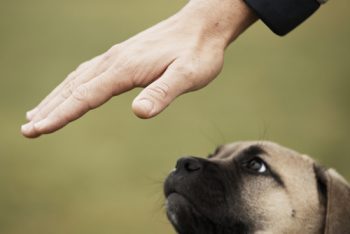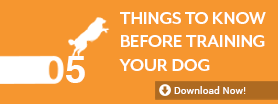
Bringing a new puppy into your home is an exciting– and sometimes exhausting– time. While the prospect of bonding with this new friend can be exhilarating, puppies require more supervision than adult dogs. Keeping your new friend out of trouble while he is learning requires time and energy. Done correctly, however, training can be a great opportunity to bond. Indeed, the right positive puppy training method can be the foundation for a strong friendship.
Remember when this worked?
“Old school” methods of puppy training include punishing your dog for incorrect or “bad” behavior. This might include “rubbing his nose in it” for eliminating in the wrong place or smacking him for chewing up some valued item. This system also hinges on the belief that there is a hierarchy and that your dog needs you to be the alpha or leader. That means that you must teach your dog his place in this system by not allowing him to sit on the furniture or sleep on the bed or even to cross a threshold before you do. While these techniques can certainly prove effective in the short term, they are confusing to the dog and can cause long term issues. It is much better to teach your new pup what you want him to do without harsh punishments.
Positive puppy training techniques
Positive puppy training focuses on rewarding appropriate behavior. It is based on the philosophy that positive reinforcements work better than punishment. In the example of elimination, this would mean first keeping careful watch over the puppy. If he is caught eliminating in the wrong place, he should be quickly removed (mid-stream if necessary) and placed in an appropriate space to eliminate.When he eliminates in the correct place—during a walk, for example– he should be given positive reinforcement. As with any training, consistency is the key. Being consistent in your efforts is what will ultimately help your new dog to understand what is expected of him.
Positive training can be fun!
Susan Garrett is a world renowned trainer and has helped countless people train their dogs. Her philosophy is simple: make learning fun. In other words, training should be enjoyable for both the trainer and the dog. If it is enjoyable, you will both be more engaged in the process. When using play as an integral part of training, pay attention to your dog and find out what they value. Then you can use that item (toys, treats, etc.) as a reward for making the right choices during training sessions.
Exercise is good for beast … and man!
Another way to positively manage your pet is to make sure he gets plenty of exercise. If you take him walking and play with him, this will help him to release some of the energy so prevalent in young puppies. Without an appropriate outlet for this energy, puppies can behave in a destructive manner, usually chewing up any item within reach. Relieving some of that pent up energy will also help them to be less distracted and more focused during a training session.
Effective puppy training without the use of harsh punishments is not only possible, it is more beneficial for the relationship between you and your dog. Teaching your new friend will require effort and being consistent, but there are no rules indicating that training must be a chore. And, with the right training, you will be rewarded by the newest member of your household for years to come.

